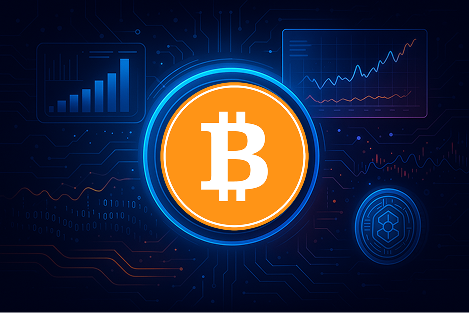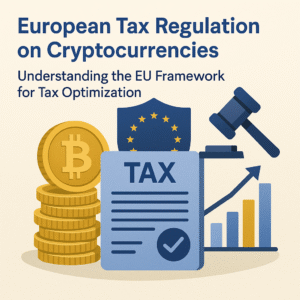Tron: TRX Price, How It Works, Analysis & Investing in the Crypto

Tron (TRX) positions itself as a blockchain platform focused strongly on applications, DeFi, NFTs, and payments, supported by strategic partnerships and institutional movements. This article offers a comprehensive analysis of TRX price, its technical workings, history, and practical advice on how to buy Tron and invest in TRX.
Key takeaways
- Short-term volatility: sensitive to announcements, on-chain activity, and Justin Sun’s personal brand
- Key drivers: DPoS consensus, DeFi adoption/TRC‑20 tokens, decentralized content initiatives
- Long-term potential: boosted by USDT dominance on Tron and DeFi/streaming opportunities
- Positioning: a scalable alternative to Ethereum with low fees and high speed
Overview of Tron (TRX)
Tron (TRX) is a Layer 1 blockchain founded in 2017 by Justin Sun, with the mission to build decentralized infrastructure for digital entertainment, content, and decentralized finance (DeFi). Today, Tron is one of the most active networks, processing millions of transactions daily, mainly for USDT transfers and dApp activity.- Ticker: TRX
- Category: Layer 1 / DeFi Infrastructure
- Core function: Host decentralized applications and enable fast, low-cost transactions
TRX utility includes:
- Paying transaction fees on the Tron network
- Governance participation through staking
- Interacting with TRC‑20 smart contracts and dApps
How Tron (TRX) Works
Tron (TRX) is a Layer 1, EVM-compatible blockchain using Delegated Proof of Stake (DPoS) for consolidation, achieving high speed and minimal fees.DPoS Consensus & Governance
TRX holders elect 27 Super Representatives every six hours via weighted voting based on staked TRX. These SRs validate blocks and govern the network, earning rewards they may share with voters. DPoS enhances efficiency but is less decentralized compared to Ethereum.Resources: Bandwidth & Energy
Users “freeze” (stake) TRX to earn bandwidth points (for transactions) and energy (for smart contract execution), enabling free or very low-cost network interaction, boosting DeFi and NFT appeal.EVM Compatibility
Tron is EVM-compatible via the Tron Virtual Machine (TVM): Ethereum developers can deploy TRC‑20 smart contracts with minimal adjustments, facilitating DEXs, NFTs, games, and stablecoin integrations like USDT.Token Utility
- Transaction fees paid in TRX via bandwidth/energy
- Staking & governance: voting for SRs and participating in the network
- DeFi incentives: farming rewards
Circulation & Liquidity
TRX is listed on major exchanges (Binance, Kraken, Bitget), with significant daily volume, particularly from USDT transfers (61% of on-chain USDT uses Tron). This technical model makes Tron extremely fast, scalable, and accessible, with smooth governance and minimal usage costs—ideal for users, services, and developers. To try Tron, stake TRX, or deploy a smart contract, buy TRX on Binance, Kraken, or Bitget via our partner links.History & Creation of Tron
Tron (TRX) was founded in 2017 by Justin Sun, a University of Pennsylvania graduate and former Ripple representative in China. He established the Tron Foundation in Singapore and launched an ICO to fund the project.Key Dates:
- August 2017: Successful ICO, raising ~$70M and launching the ERC‑20 TRX token
- June 25, 2018: Mainnet launch and migration from ERC‑20 to independent Tron network
- July 2018: Acquisition of BitTorrent for nearly $120M, integrating the protocol and BTT token
- April 4, 2021: Transition to a deflationary TRX model with network fee burn
- 2022–2023: Launch of algorithmic stablecoin USDD on Tron and upgrade to Staking 2.0, separating staking and delegation
Recent Developments:
- June 2025: Announced reverse merger with SRM Entertainment, leading to listing as a U.S. public company (Tron Inc.) and raising $100–210M in TRX. This followed the SEC dropping charges against Sun under a Trump-era settlement, enhancing Tron’s institutional credibility.
Founders and Team
Team & Governance:
- Justin Sun: charismatic founder, former Ripple engineer, diplomat for Grenada, driving operations through Tron DAO
- Tron Foundation (Singapore) evolving into a DAO, enabling collective governance via Super Representatives
What Makes [Nom cryptomonnaie] Unique?
Tron’s Strengths: Performance, DeFi, Streaming & Tokenomics
Tron (TRX) stands out as a versatile blockchain platform combining speed, low fees, practical applications, and a strategy focused on entertainment tokenization.1. Speed & Ultra-Low Fees
Thanks to DPoS, Tron validates blocks in seconds with up to ~2,000 TPS. Transactions are nearly free—often under $0.001—making it ideal for micro-transactions, stablecoin transfers, and DeFi activities.2. DeFi Ecosystem & TRC‑20
Tron hosts a rich DeFi ecosystem—JustLend, JustSwap, Sun.io—for yield farming, lending, and token swaps. USDT is primarily issued on Tron, with over 60% of stablecoin transfers using this network. TRC‑20 tokens drive robust, low-cost application adoption.3. Decentralized Streaming: BitTorrent & DLive
Acquiring BitTorrent enabled BitTorrent Speed—a P2P platform rewarding users in BTT or TRX. Projects like DLive further reinforce Tron as a monetized content platform.4. Governance & Deflation
TRX staking empowers election of 27 SRs for block production and network governance. Since April 2021, transaction fees have been burned, reducing supply. Staking 2.0 splits freeze and delegation functions for improved efficiency.
5. Implicit Comparison
| Criterion | Tron (TRX) | Ethereum | Solana/Polygon |
| TPS | ~2,000 | ~15 | 65,000+ |
| Avg Fees | < $0.001 | $1–5 | $0.0025 |
| Consensus | DPoS | PoW → PoS | PoH/PoS |
| Compatibility | TVM (EVM‑compatible) | EVM | Non-EVM |
6. Innovation & Outlook
- USDD: ongoing development of algorithmic stablecoin
- Content tokenization: streaming, gaming, NFTs paid in TRX to drive mainstream adoption
- Public listing: reverse merger with SRM Entertainment brings Tron into traditional finance
Conclusion & Future Outlook for Tron
Tron (TRX) stands as a high-performance, accessible blockchain oriented toward real-world use: swift transfers, stablecoins, DeFi, and content streaming. With minimal fees, EVM compatibility via TVM, and efficient DPoS governance, Tron appeals to developers and end-users alike. The planned stock exchange listing via a reverse merger is a strategic milestone, introducing Tron to traditional finance and enhancing legitimacy. USDD development, USDT dominance on Tron, and Web3 ambitions indicate a solid outlook—despite a more centralized governance than Ethereum. Buy TRX today on Binance, Kraken, or Bitget via our affiliate links, and explore Tron’s DeFi, NFT, and streaming ecosystem.
FAQ – All About Tron (TRX)
- What is TRX used for? TRX pays transaction fees, enables staking, and interacts with DeFi, NFT, and content services on Tron.
- Is Tron a good investment? Tron is a high-performance blockchain with widespread adoption—especially through USDT, low fees, and a diverse ecosystem. It suits DeFi-inclined profiles.
- How does Tron compare to Ethereum? Tron is faster and cheaper, using a DPoS consensus versus Ethereum’s more decentralized PoS model. Tron is EVM-compatible via TVM.
- Where can I store TRX? Store TRX on wallets like Trust Wallet, Ledger, TronLink, Atomic Wallet, and centralized platforms like Binance or Kraken.
- Is the project secure? Yes—Tron uses robust DPoS governance with 27 elected validators. It is stable and heavily used, primarily for stablecoin transfers.
- How to buy Tron (TRX)? TRX is available on Binance, Kraken, Bitget, and others. Use our affiliate links to buy TRX safely and support our content.
Disclaimer :
Trading is risky and you may lose all or part of your capital. The information provided does not constitute financial advice and/or an investment recommendation
Top-Rated Platforms to Trade Crypto
Explore Our Financial Views on the Market
Crypto News & Insights
Digital Assets Forum 2026 returns to
The Digital Assets Forum (DAF), one of Europe’s most respected...
Blockchain and Cryptocurrency Conference (B2C’ 2025):
The Blockchain and Cryptocurrency Conference (B2C’ 2025) is scheduled for...
European Tax Regulation on Cryptocurrencies: Understanding
The regulation of the cryptocurrencies market in the European Union...













